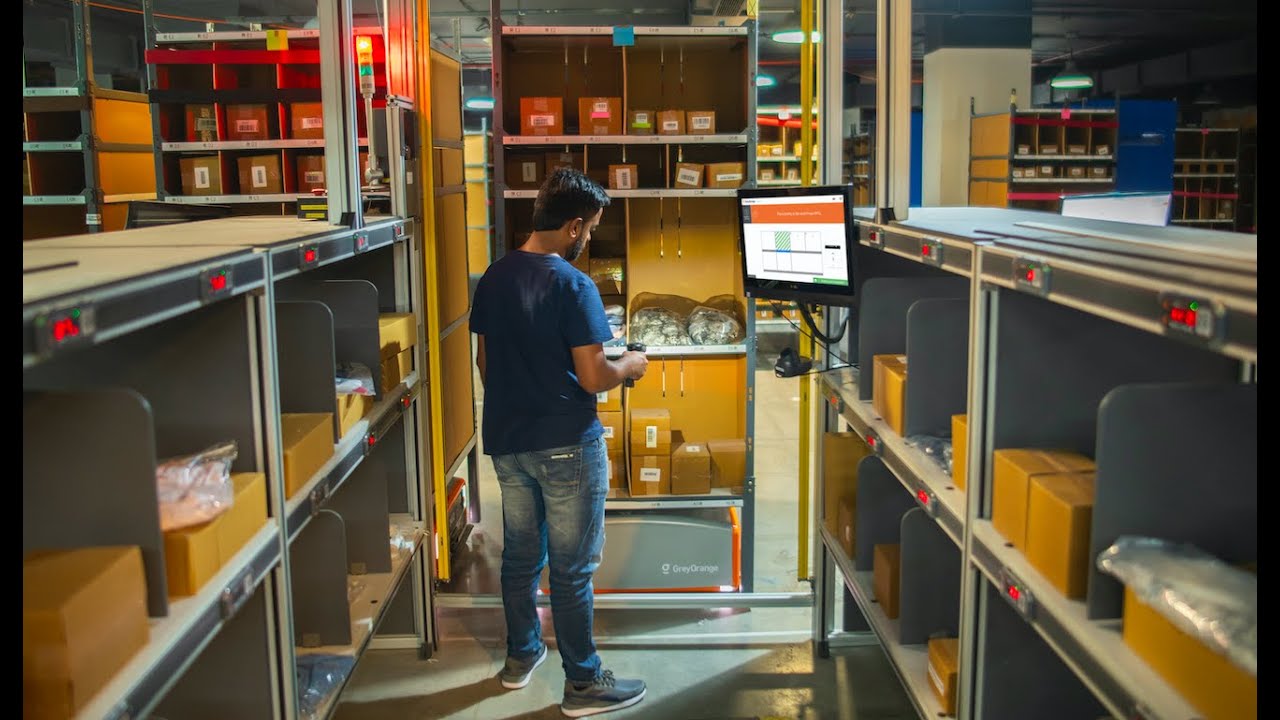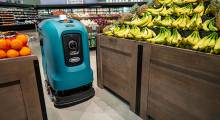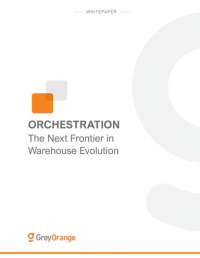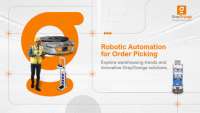From the growth of e-commerce during the COVID-19 pandemic to persistent labor shortages, there have been plenty of reasons for supply chains to adopt mobile robots. However, understanding the need to automate and getting a return on one's investment are two different things, noted GreyOrange's CEO.
The key is whether robots are adding value as part of a holistic approach, noted Samay Kohli, co-founder and CEO of GreyOrange Inc. The Roswell, Ga.-based company provides automation for warehouses, distribution centers, and fulfillment facilities.
Kohli recently spoke with Robotics 24/7 about how robots such as GreyOrange's Certified Ranger Robots (CRN) and software such as its GreyMatter fulfillment orchestration platform can meet growing and shifting market demand.
Labor and automation
While e-commerce demand accelerated earlier in the COVID-19 pandemic, has it subsided now, or is it still a strong driver for adopting automation?
Kohli: It's still a driver. Automation helps hedge against labor shortages, growing demands on the warehouse, and the need for greater safety within the warehouse.
For us, the demand has much more to do with labor availability than the effects of COVID. Unemployment rates are back at pre-pandemic levels. The industry is short 1.4 million people. GreyOrange doesn’t just support e-commerce; we support many more channels.
There are some companies that have grown 5X and will stabilize. E-commerce has passed a threshold after which you can’t keep it as a separate channel. You can’t just duplicate the inventory.
With the holiday shopping season upon us, what pain points are your customers experiencing? How does GreyOrange address them?

Kohli: Labor shortages, inflation, and return management.
Average turnover is high as people retire or move to other industries, and the seasonal labor shortage is even worse. We have a client that's an outdoor fashion retailer. It said it will have to shut down three plants for two months to move 500 people to fulfillment because it can't get seasonal labor.
For returns management, labor rates are also higher. In Pennsylvania, people are averaging $4.50 extra per hour between day shifts and weekday night shifts. It has never been this high.
We have another site in Maine, where the average age of the workforce has gone up by 10 years because younger workers left during COVID-19.
How can autonomous mobile robots (AMRs) help with recruitment and retention?
Kohli: Automation improves worker efficiency and decreases the likelihood of workplace injuries. Automation also goes hand in hand with improved worker satisfaction and retention, since they can spend more time on high-skill work.
Across the board, we've seen massive increases in retention after robots come in. It's not about replacing people, and job satisfaction goes up drastically.
Go into any warehouse without automation, and pickers walk 13 to 15 miles per day. Once robots come in, it's point-to-point movement, and walking goes down to half a mile.
It's the difference between being a laborer versus a career, like working on a farm versus operating a farm.
The salary gap between people who just started compared with pickers with 30-year tenures is less than 25 cents. New people make more money because of retention bonuses.
Managing multiple agents
How does GreyMatter Autonomy take into account entire processes on the floor—including human workers?
Kohli: The GreyMatter Fulfillment Orchestration Platform treats any robot, human being, software process, or automation—everything that logs in—as an agent. Workflows are built at an orchestration level, not at the level of robot operations. If robots need secondary intelligence to decide what to do, it runs on the cloud.
GreyOrange uses the “crawl, walk, run” strategy. Some of our clients start without robots at all. You can just get our workflows in place and start training.
For example, in fulfillment, there might be 100 exceptions that a human can handle and that are not automated processes. We see that as part of GreyMatter, meeting clients where they want to meet, and then they can increase the use of it over time.
The system starts auto-optimizing. Change management can typically take as low as two weeks or as high as two months.
How much do you rely on simulation?
Kohli: We run a digital twin of the warehouse for months or weeks before a site goes live so optimization doesn't happen at the cost of operations. The workflow data structures are defined to be extremely extensible. The WMS [warehouse management system] or WES [warehouse execution system] already has a defined structure.
GreyMatter is built on a modern compute platform and can handle eaches and cases. We have one site with 1 million SKUs, but there's no limitation with basic fungibility.
A customer study found that our software is better. Nobody in supply chain or robotics writes in that language, but it runs Internet routers, telecommunications, stock exchanges, and national health services.
How important is interoperability to you?
Kohli: We do heterogeneous fleets. We are hardware-agnostic. Our software supports it, but it takes time to get optimization right.
One of our oldest sites in Chile has four robots and was built over four years. There are 350 AMRs, three robotic arms placing pallets, and close to 100 intralogistics systems running in manned zones.
It also has one to two miles of conveyors, and 30 elevators in four stories. The elevators are completely automated, and the facility runs GreyMatter at the core. The system runs online order processing and cross-dock operations.
Funding, partnerships, and industry challenges
GreyOrange obtained growth financing earlier this year; how are its expansion and partnerships in the Americas going?
Kohli: We're growing quite fast, and North America is a core market for us.
We're also doing well elsewhere, with Sodimac in South America and Apotek Hjärtat in Sweden. Our partnership with Sistemo is expanding, and we just announced another partnership with Dafiti in Chile.
Speaking of partnerships, truck unloading is a new frontier for robotics, as seen in GreyOrange's collaboration with Technica. When will iTLS—Powered by GreyMatter be available?
Kohli: It will be available soon. We're taking our first site live early next year. When we announce partnerships, vetting technical capabilities will take anywhere from three to nine months before they're certified.
The solution improves dock efficiency and speed. It makes a very labor-intensive part of the fulfillment process safer for workers by enabling smart robots to complete the manual tasks of loading and unloading.
Boston Dynamics, Honeywell, and others have been trying to solve this big problem, but their solutions are not yet used at scale by industry. iTLS has gotten ahead. The space still needs maturation, but we've had a massive pull from our clients.
Returns processing is another challenge for retail and e-commerce—how does GreyOrange help with that?
Kohli: Usually, returns typically don't get merged back with the main inventory. A retailer may sell 10 shirts and get five back, but they go to different places [in the facility]. Then it gets new orders, and more come back.
Pulling orders from returns is really expensive because it needs way more processing time. Our average turnaround for inventory is one day, and it's available to ship and in the same flow—not a different area. GreyMatter manages the workflow, and it's almost seamless.
Where do you see the next wave of innovations?
Kohli: First, we're trying to get more and more agents. We've innovated in replenishment, managing human operators and nine third-party robots. Customers want more end-to-end solutions—they want robots but can't adopt bespoke solutions.
Second, because of all the edge cases in omnichannel, we're looking at how to manage workflows autonomously.
Third, we run really large systems—our average number of robots per site is 200 robots. We want to get more into how to decide what to do with automation, so if 30 out of 40 people show up, the planning software can say, “You need to move forward pickers to packing jobs, or you need to move to putaway people to picking because you’re going to breach your SLA [service-level agreement].”
People started realizing that with analytics, optimization, and AI, we can get average productivity up, which is huge for clients.
Editor's note: This interview has been edited for clarity and brevity.
About the Author
Follow Robotics 24/7 on Linkedin
Article topics
Email Sign Up




















